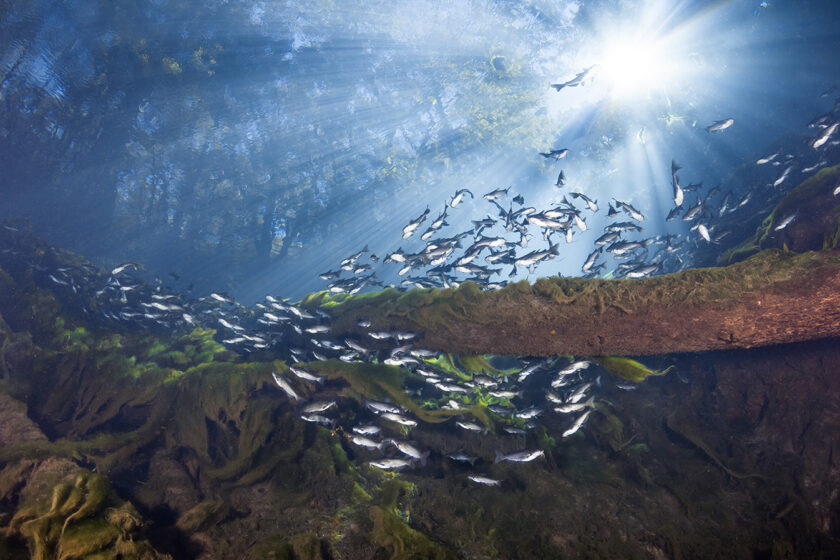Much is written about Florida’s freshwater springs, and the unique immersion opportunities these sparkling bodies of water offer divers. But surprisingly little of this coverage is devoted to one of the state’s first-magnitude water sources, and it’s one that I have long considered a favorite.
Maybe it’s a case of out-of-site, out-of-mind. Located just outside of the small west Florida town of Chiefland, Manatee Springs is farther from the I-75 corridor than more publicized venues such as Ginnie Springs, Devil’s Den and Blue Grotto. And, because Manatee Springs is the centerpiece of a state park, there’s no commercial promotional effort, and no dedicated web site to provide details or entice divers to put a few more miles on the odometer. Whether or not these extra miles are “worth it,” depends entirely on one’s attitude towards springs diving in general.
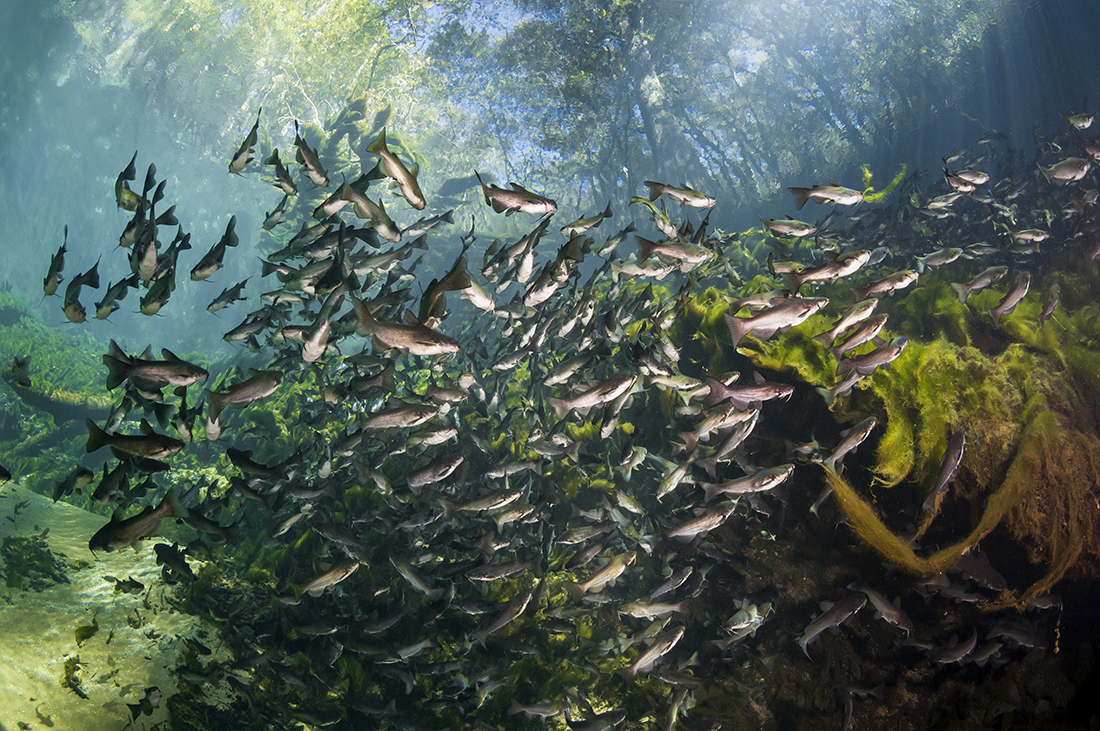
I’ve logged more than a thousand dives between the Florida Keys and North Florida’s inland sinkholes and springs. When it comes to Florida’s Spring Country, unlike many cave divers who often considered spring basins as little more than entry points and deco stops. I see them as much as essential part of the experience as roaming the dark passages of a cave.
At the other end of the spectrum, Florida’s springs are a favorite venue for training and check-out dives. Drive-up access and predictably clear, calm conditions provide an ideal environment for neophytes to hone their basic skills and earn a C-card.
In between these extremes, there is a core group that enjoys these freshwater pools for their own merits and can return to the same site time and again without becoming jaded. After decades of focusing on the caves and caverns, I rejoined the ranks of spring basin divers when my son earned junior certification, as the controlled depths and contained environment of the springs were ideal for an aspiring young explorer. Accompanying him, with a full tank of air to burn through and limited real estate to explore, I found myself slowing down and paying much more attention to the nuances of my submerged surroundings. And thus began my rediscovery of Manatee Springs.
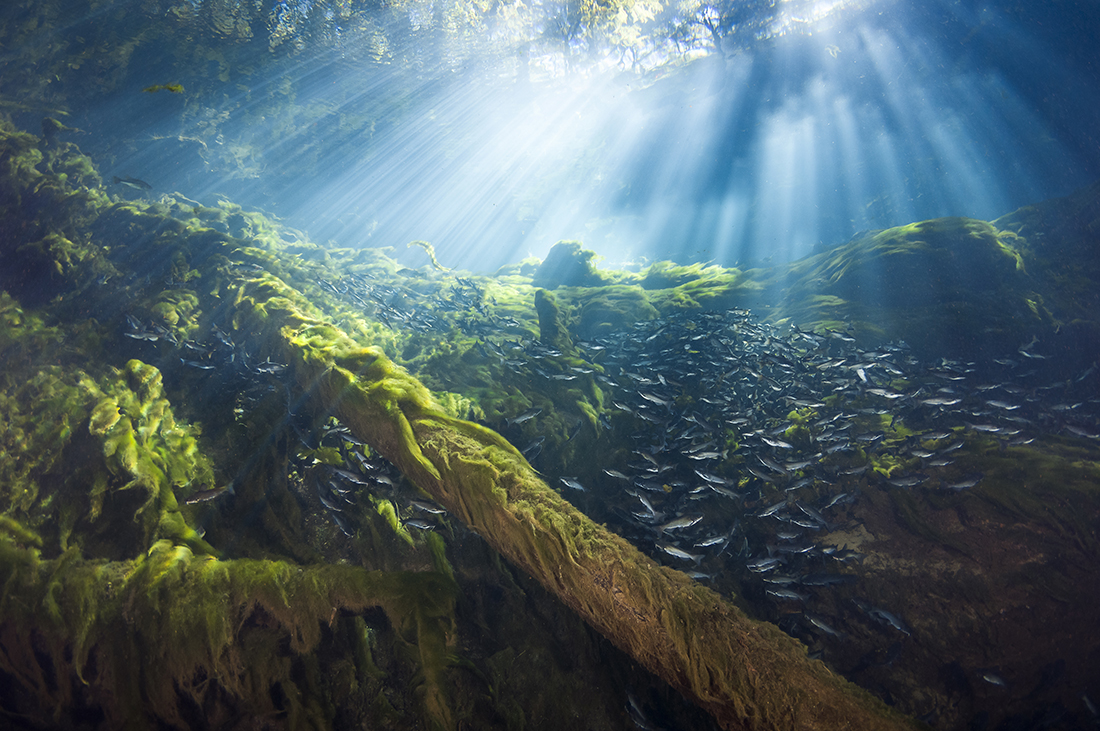
The two open-water dive sites available at the park are exactly the sort of venues where diving is about slowing down and discovering the nuances of structure, light and shadow. Because upstream sinkholes draw particulate into the cave’s water flow, Manatee doesn’t deliver quite the bottled-water clarity of venues such as Ginnie Springs, The resulting water quality in the spring basin is the aquatic equivalent of an afternoon summer haze in the mountains – giving substance to the sunbeams that filter down from above, while softening but no obscuring the far walls of the pool.
These nuances may be obscured if you enter either the spring basin or adjacent sinkhole when it is occupied by other divers or a group of trainees who have yet to master buoyancy control. Fortunately, the park’s relatively low diver traffic in comparison to Florida’s more marquee freshwater sites means that there is a good chance you will be the only dive team in the water or can be after a short wait to let the particulate settle.
Dive Plans
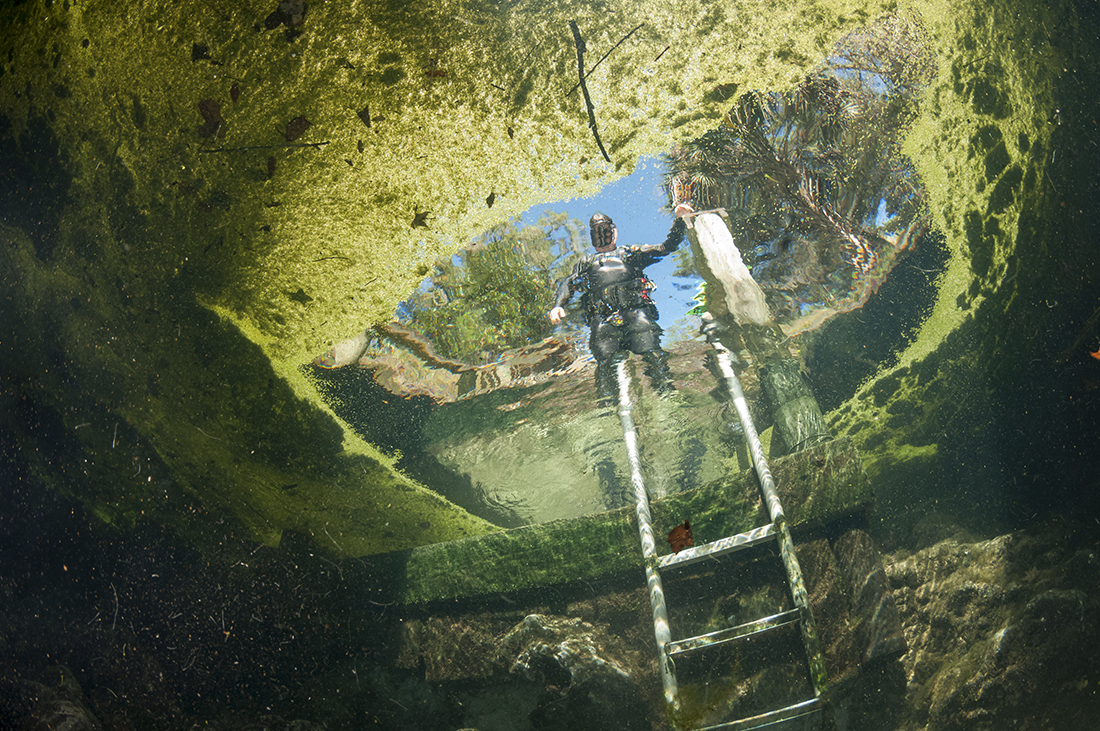
Manatee Springs State Park is located six miles west of the town of Chiefland, at the western terminus of SR 320. As with other Florida State Parks, there is no longer an additional fee for scuba diving, just a $6 per vehicle entrance fee. Divers must register and provide proof of certification, which will be held until they exit the park. From the main parking lot, it’s a walk of less than 200 yards to the open-water dive sites, which are in close proximity to each other, with picnic shelters, benches, bathrooms and an outdoor shower nearby.
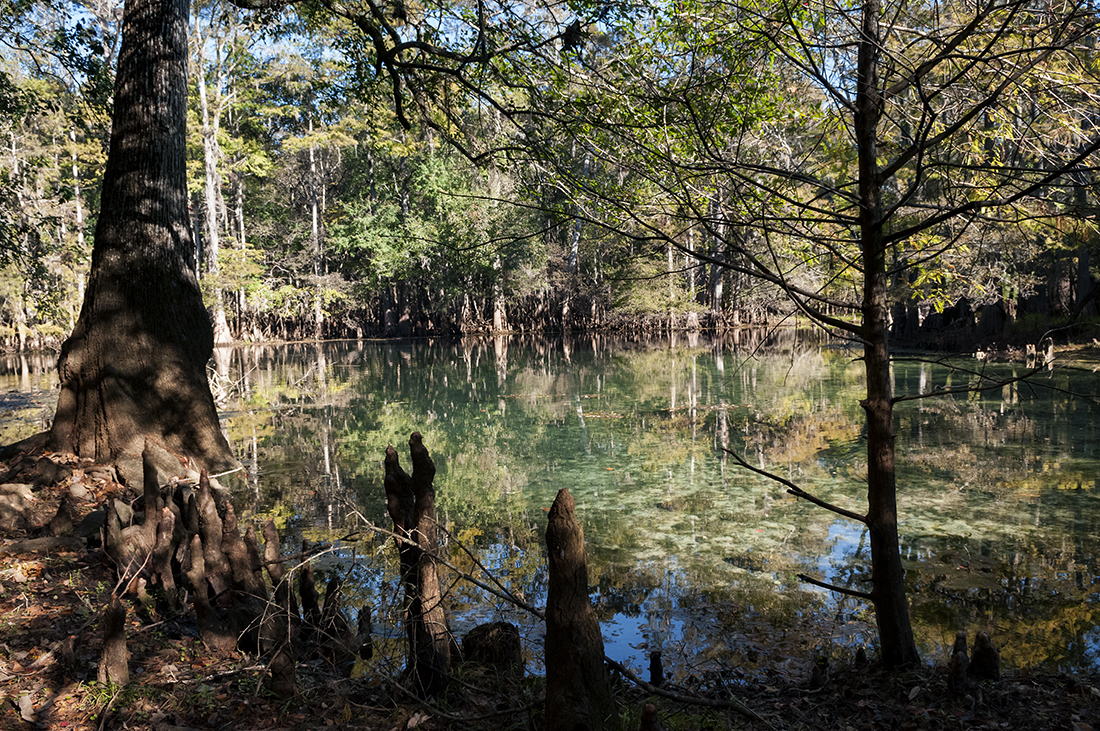
The park’s namesake spring basin forms a pool some 80 feet across and about 25 feet deep. There is a narrow but obvious cave opening, but little danger of straying into the darkness beyond, as the outflow is quite strong – some than 100 million gallons a day. Adventurous types may be able to pull themselves a few feet down into the cave mouth, but it’s not a good idea, as the buffeting currents could lead to a nasty head bump should you loose grip.
Aside from the simple joy of being immersed in cool fresh water, one of the main attractions of the spring basin is following the schools of fingerling catfish and mullet that patrol the headspring’s limestone headwall, and possibly venturing into the shallows of the run to search for turtles and bass among the cypress tree roots that line the bank. In winter, manatee may enter the spring to escape the colder water of the nearby Suwannee River, and if they reach the headspring, divers are not allowed to enter the water.
Just a couple of hundred feet from the spring basin is the sinkhole known as Catfish Hotel. Were it not for the sturdy stairs leading down to water’s edge, you might not guess this was a dive site, as its surface is typically covered in an enveloping layer of green duckweed. The plants that make up this layer of “pond scum,” are actually beneficial to water quality, as they block sunlight that would otherwise cause rampant algae growth.
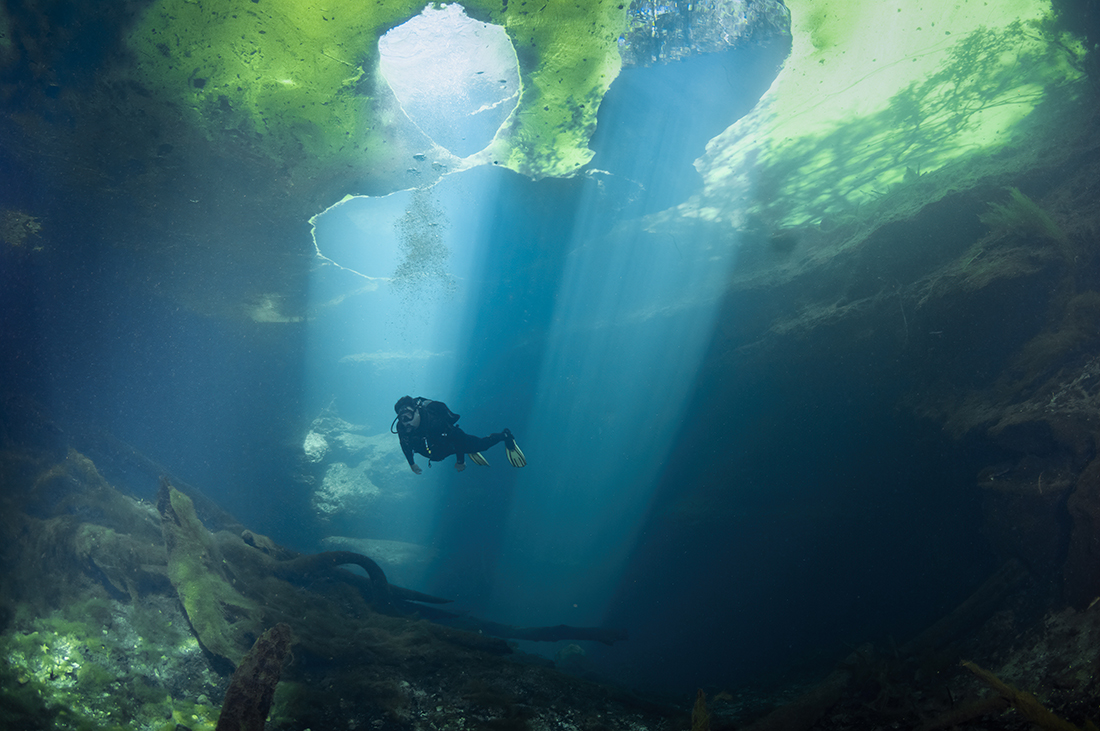
If the green stuff freaks you out, simply swish it away as you enter the water, and you will discover a layer of clear water just below. Once you submerge, the bubbles from your regulator will create a hole in the duckweed ceiling as they hit the surface. This phenomenon makes for some very interesting light patterns within the sinkhole. The open-water portion of the sink is a bit more than 100 feet in diameters, and some 50 feet deep. Divers who follow the bottom down and to the left will soon find themselves under a limestone ledge, and in a cavern zone that continues down to depths of about 65 feet. Cavern or cave certifications are required to carry lights, but intrepid open water dives might delve far enough into the shadows to see the faint white glow of the “Grim Reaper” signs that warn of the dark cave passages that lie beyond.
The smart dive plan is to make Catfish Hotel the first dive of the day – both because it is the deeper site, and because, no matter how carefully you clear the duckweed away before surfacing, some of the small green globules will inevitably hitch a ride on your gear. A second dive in the spring basin will wash away the weed, and if you have decent air consumption, you should be able to make both dives on a single tank.
The Cave
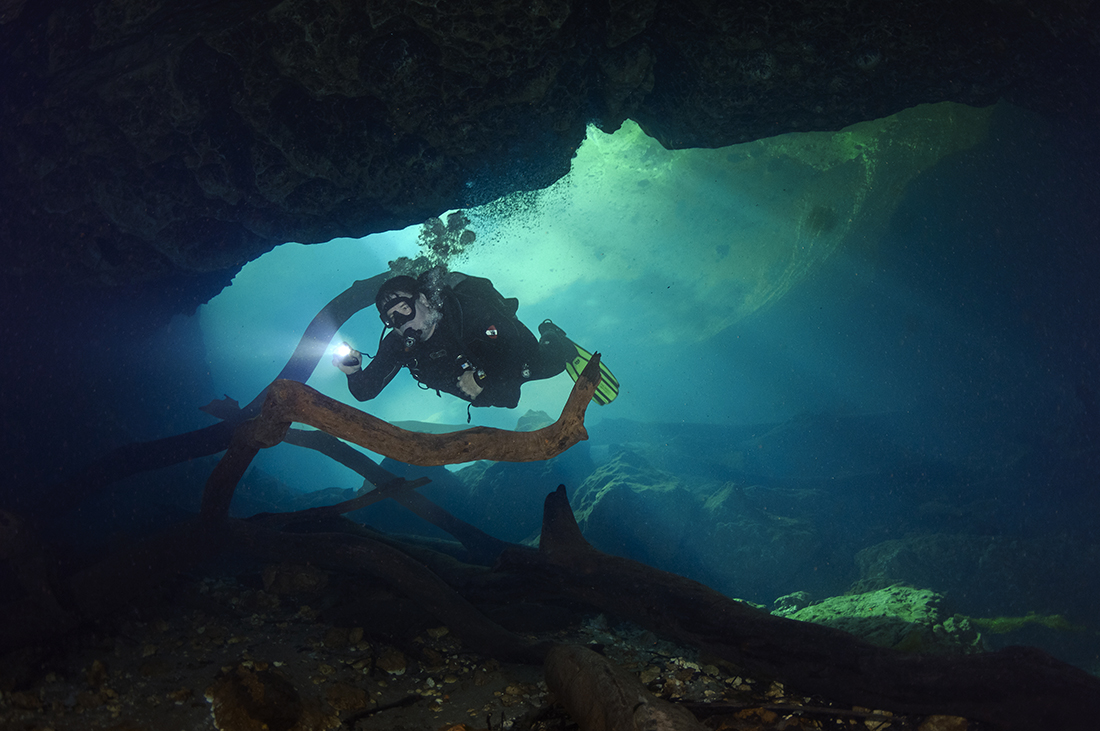
The tunnels of the Manatee Springs Cave system has been pushed out to a distance of more than two miles, but despite easy access, it is not one of Florida’s more popular recreational cave systems. A primary reason for this is the high-flow nature of the passages, which require considerable fortitude when moving upstream – or a good DPV. There are several sinkholes that provide access to the Cave, with Catfish Hotel being the furthest downstream.
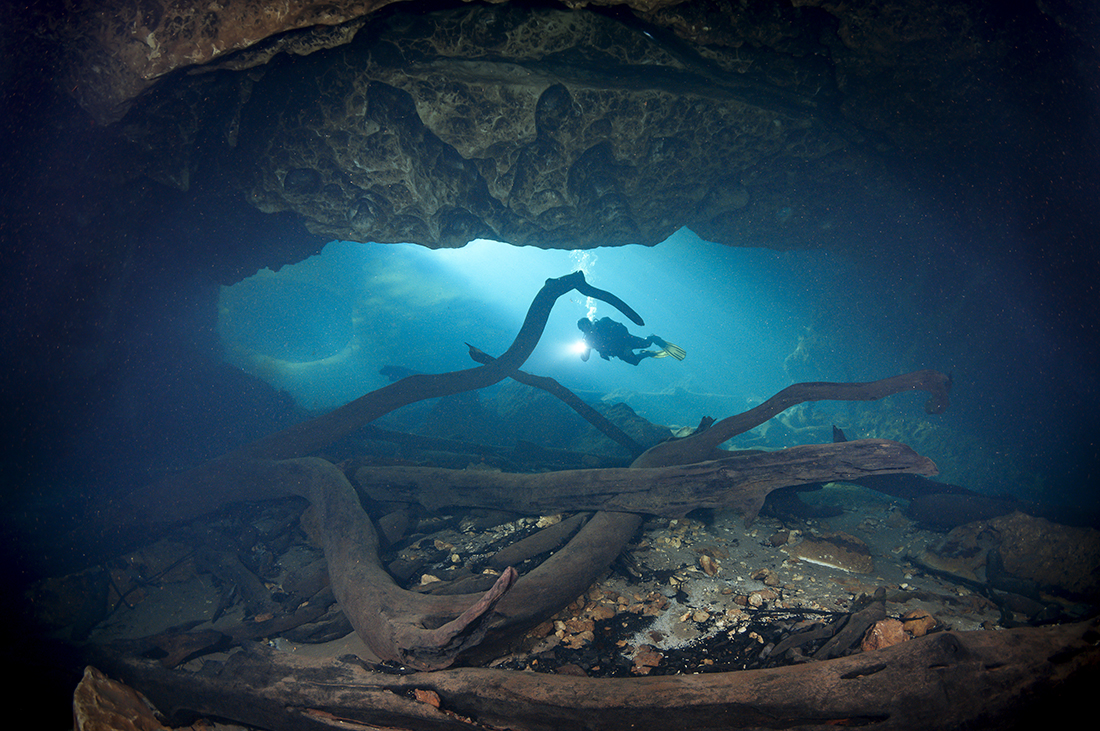
While the cave can be challenging, the cavern zone is ideal for freshly-minted cavern divers to practice or refresh their skills. The sand-and-clay bottom produces a heavy layer of silt that is somewhat forgiving of errant fin kicks. Another plus, the large cavern zone is flanked by several submerged logs that provide secure tie off points for guidelines.
Getting to the Park
Manatee Springs State Park is located at the end of SR 320, some six miles west of U.S. 98 and the town of Chiefland. The turnoff from U.S. 98 is clearly marked with large signage. From Ocala and points south, drivers should exit 1-75 at U.S. 27, while divers coming form the north can exit to Route 24, aka Archer Road, in Gainesville to connect with U.S. 27 in Bronson. The park is also accessible by boat from the Suwanee River, with a quarter-mile boardwalk that connects the riverfront dock with the spring basin and picnic area.
In addition to diving, the park offers 78 campsites, a picnic area and hiking trails. There are three motels in Suwanee – a Best Western, Days Inn and the Manatee Springs Motel, with the usual fast food franchises and several good local restaurants scattered along U.S. 98. Admission is $6 per vehicle, with no additional fee for scuba diving.

